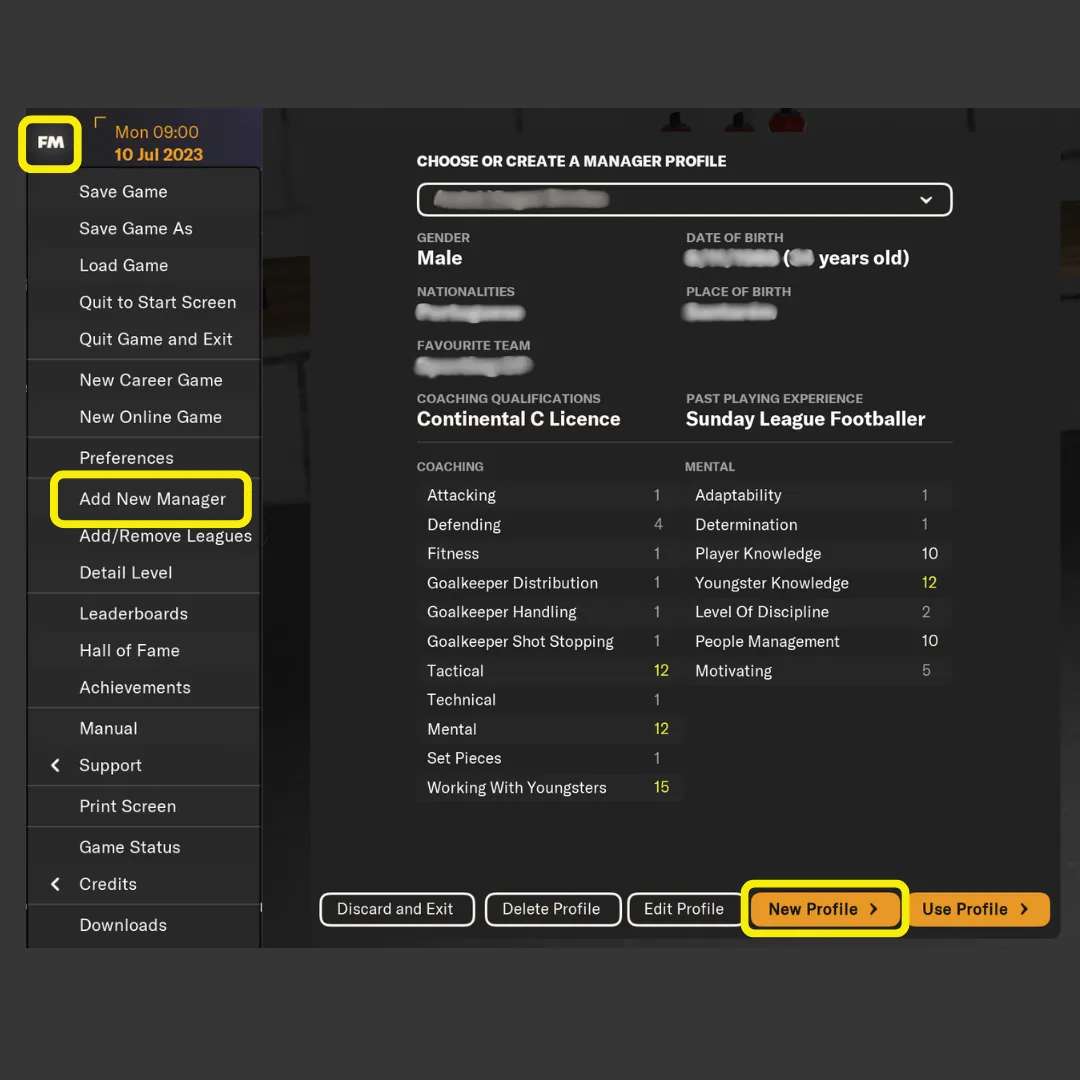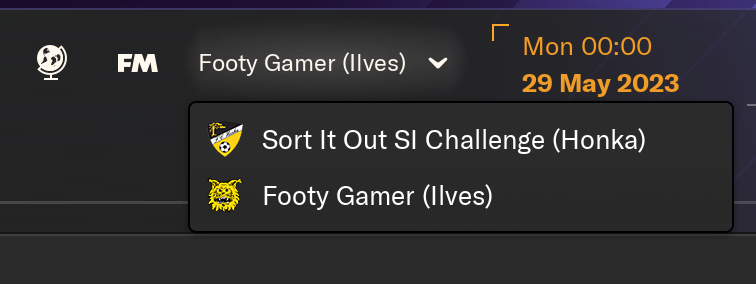Want to write for our blog? Get in touch about becoming a sortitoutsi writer.
Multi-club networks are everywhere in football right now, from the City Football Group owning clubs everywhere from Manchester to Melbourne to Watford’s army of loan signings from Udinese. If you’re looking for a new challenge in FM, why not try managing multiple clubs and create a multi club network of your own? In this guide we’ll explain how to get setup and two different approaches you can take.
Setting up more than one manager in Football Manager
Some people might not even know that it’s possible to add a second manager in FM24. If that’s you then don’t worry, doing so is really simple, just click the FM Logo then “Add New Manager”. When creating a second manager you might want to create a “New Profile” so that your second manager has a unique name, attributes and appearance.

After you have two or more managers setup each one will take it in turns to take their turn so you will have to click continue once per manager to progress the date.
If you’ve hit continue with one manager early don’t worry, you can easily switch between them using the dropdown button at the top of every page.

Strategic Approach for Multi-Club Network
Now you’ve got two managers setup you’ll want to decide how you’re going to organise your project, are you aiming to feed a Main Club or try and boost all clubs simultaneously?
Feeder System for a Main Club
If the goal is to channel resources and talent toward strengthening a central, Main Club, here are key strategies to ensure effective player development and seamless transitions:
- Expanded Feeder Club Setup: establish feeder clubs across different competitive levels, for example: a local feeder for early-stage development, a second-tier feeder in a more competitive league to foster advanced experience or a foreign feeder club in a league with lenient work permits, allowing young players international exposure.
- Talent Pipeline Management: define age and experience criteria for each club to create a clear path for talent progression. Players start at the local feeder club, move to more challenging leagues, and ultimately reach the Main Club.
- Youth Facilities and Coaching Focus: invest in state-of-the-art youth facilities and hire specialized youth coaches at each feeder club.
- Unified Tactical Philosophy: use consistent tactics across clubs, facilitating an easy transition for players moving between clubs. Training players in similar roles and formations ensures they adapt quickly to the main club’s style of play.
- Strategic Loans: loan fringe players from the main club to feeder clubs for short-term development and match experience, maintaining player fitness and form.
- Strategic Scouting in Key Regions: place a feeder club in a region rich in emerging talent, such as South America or Africa. This reduces scouting costs and prevents other clubs from poaching talent early.
Boosting All Clubs for Global Dominance
If the objective is to cultivate strong, independent clubs that excel on both local and international levels, these strategies will ensure the entire network thrives:
- One Main Club per Continent: designate a lead club on each continent. This allows each team to pursue its continental competition, maximizing exposure and revenue potential without intra-network conflicts.
- Unique Tactical Identity for Each Club: equip each club with a distinct playing style to create tactical diversity within the network. For example, one club might focus on counter-attacks while another emphasizes possession. This approach maximizes adaptability across leagues and enhances player versatility.
- Localized Scouting Networks: establish region-specific scouting for each club to leverage geographical strengths. Scouting locally ensures faster, more cost-effective talent acquisition and creates a global player pool accessible across the network.
- Financial Support Strategy: support smaller or financially weaker clubs by loaning players, organizing friendlies, or transferring funds. If one club is wealthier, it can strategically help others improve their infrastructure and operations.
- Facility Upgrades Across the Network: regularly improve training facilities, youth academies, and stadiums for each club. By investing in all clubs, you ensure a steady supply of high-quality players within the network.
- Transfer & Contract Synergy: use cross-club transfer clauses to maintain control over player movements. Incorporate buy-back clauses, sell-on percentages, and first-refusal rights to retain influence over promising talent.
Have you ever tried a multi club model challenge in FM? Which clubs did you manage? Do you have any tips for other people attempting it?
You'll need to Login to comment